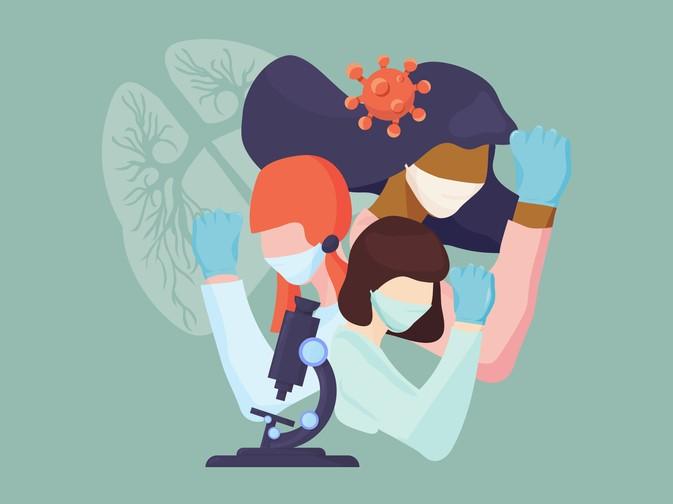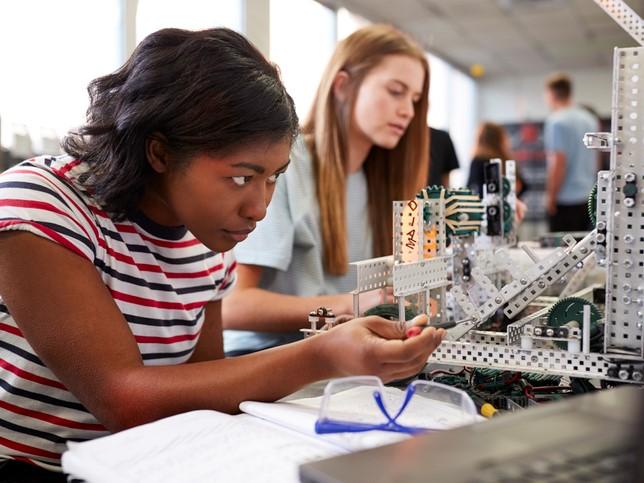
How to help young women see themselves as coders, inventors and engineers

You may also like
Popular resources
Women who study science, technology, engineering or mathematics tend to be overlooked, especially in the engineering domain. My observations are that it can be difficult for them not just to use their voice but even to find it in the first place. As educators, we have a unique opportunity to make a lasting impact on these women and help nurture their ambition.
I went to an all-girls high school in Jamaica, where all my mathematics and science teachers were Black and female. Looking back, I realise how impactful that was on my early years and how instrumental it became in my career journey. Those early experiences created a belief that success as a STEM professional was achievable and helped me in overcoming both real and perceived barriers.
- To give female students an equal educational experience, we need to promote women
- Gender equality is more than a box-ticking exercise – let’s champion it
- THE podcast: an interview with Ngiare Brown, chancellor of James Cook University
But my experience is not universal. Even today, many young women pursuing a technical or engineering career don’t see others who look like them with a seat or a voice at the table. Men represent about two-thirds of those employed in STEM occupations. Similarly, men vastly outnumber women majoring in STEM fields at US universities, and the gender gap is especially high in majors for the fastest growing and most lucrative jobs of the future. Only 21 per cent of engineering majors and 19 per cent of computer science majors are women. This can make it difficult for young women to imagine themselves as future coders, inventors or engineers.
Here are four key ways to improve the experience and retention rate of female students in STEM majors:
1. Women in STEM need to become mentors
If you are a female educator in a STEM subject, I highly encourage you to mentor young women as often as you can. There is a concerning lack of female mentors in both academia and STEM fields. The more female students see successful women in STEM as role models and mentors, the more inspired and confident they will become. Students need people they can emulate. My PhD adviser was a Black woman, and having a mentor who looked like me allowed me to imagine myself thriving in academic places and spaces.
2. Extend leadership opportunities
Don’t wait for your female students to volunteer for leadership positions. Many times, women who are perfectly capable don’t get approached for such opportunities, and they often do not have the fortitude to put themselves forward. So, seek them out and nominate them. For example, I was asked to mentor the campus chapter of the Texas Society of Professional Engineers to help recharter the organisation and form a new board. I teach introduction to civil and environmental engineering and had a lot of first-year students who I thought could benefit from this great leadership opportunity. I approached four female students about joining the board. All agreed to join, even though none had initially volunteered themselves.
3. Challenge biases and gender-based stereotypes
Challenging stereotypes and biases allows educators to contribute to an environment where all students – regardless of gender, race or background – feel supported and encouraged to explore and excel in STEM fields. Don’t stop at establishing a classroom culture that is safe, inclusive and respectful; integrate diverse perspectives into the curriculum. Include examples and case studies that feature contributions from women and minorities. Foster a collaborative learning environment where students work together on projects and encourage diverse groups that give everyone an opportunity to contribute. Lastly, facilitate discussions about stereotypes and encourage critical thinking.
4. Encourage female students to find a peer community
A support system of like-minded people can make all the difference for women pursuing STEM degrees. Organisations such as the Society of Women Engineers, National Society of Black Engineers and Women’s Transportation Seminar all have chapters across the US and help provide a sense of belonging and encouragement for the next generation of female engineers. At Southern Methodist University, student-led organisations perform outreach, bring in companies to talk to students, and help under-represented students make it through the tougher majors at our university.
Higher education is a big space, and finding the ways you can make an impact and make your voice heard can be hard – especially as a female in a male-dominated major. Educational institutions and communities can work to create an environment that empowers female students in STEM and encourages their pursuit of careers in these fields.
Janille Smith-Colin is the J. Lindsay Embrey Trustee assistant professor of civil and environmental engineering at Southern Methodist University’s Lyle School of Engineering, and a licensed professional engineer.
If you would like advice and insight from academics and university staff delivered direct to your inbox each week, sign up for the Campus newsletter.
Additional Links
See our International Women’s Day spotlight for more advice and resources from women leaders in higher education.


